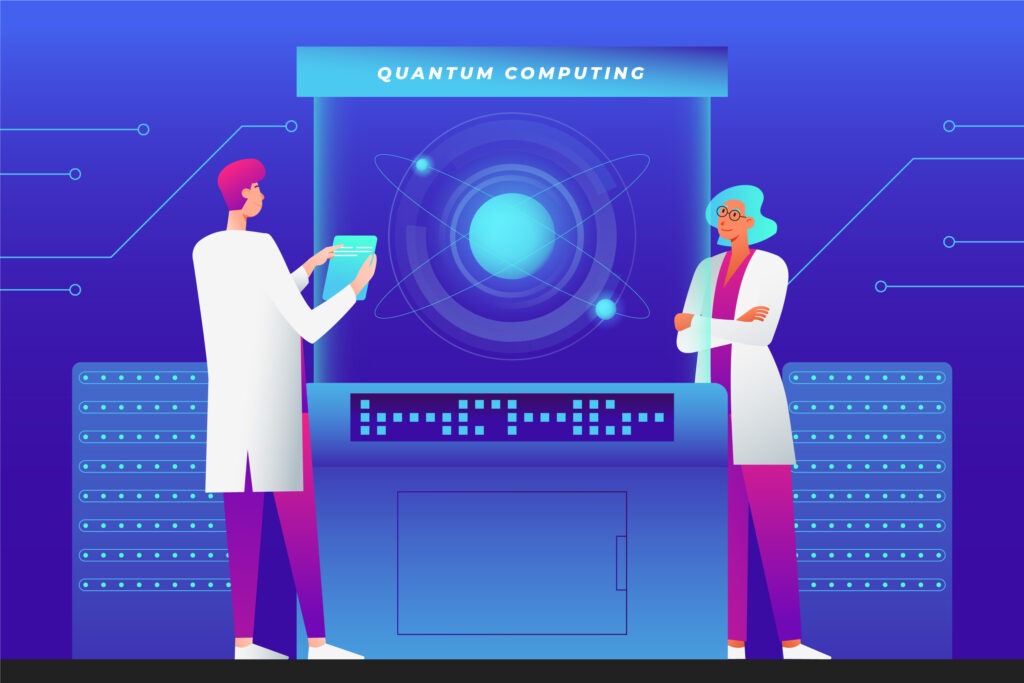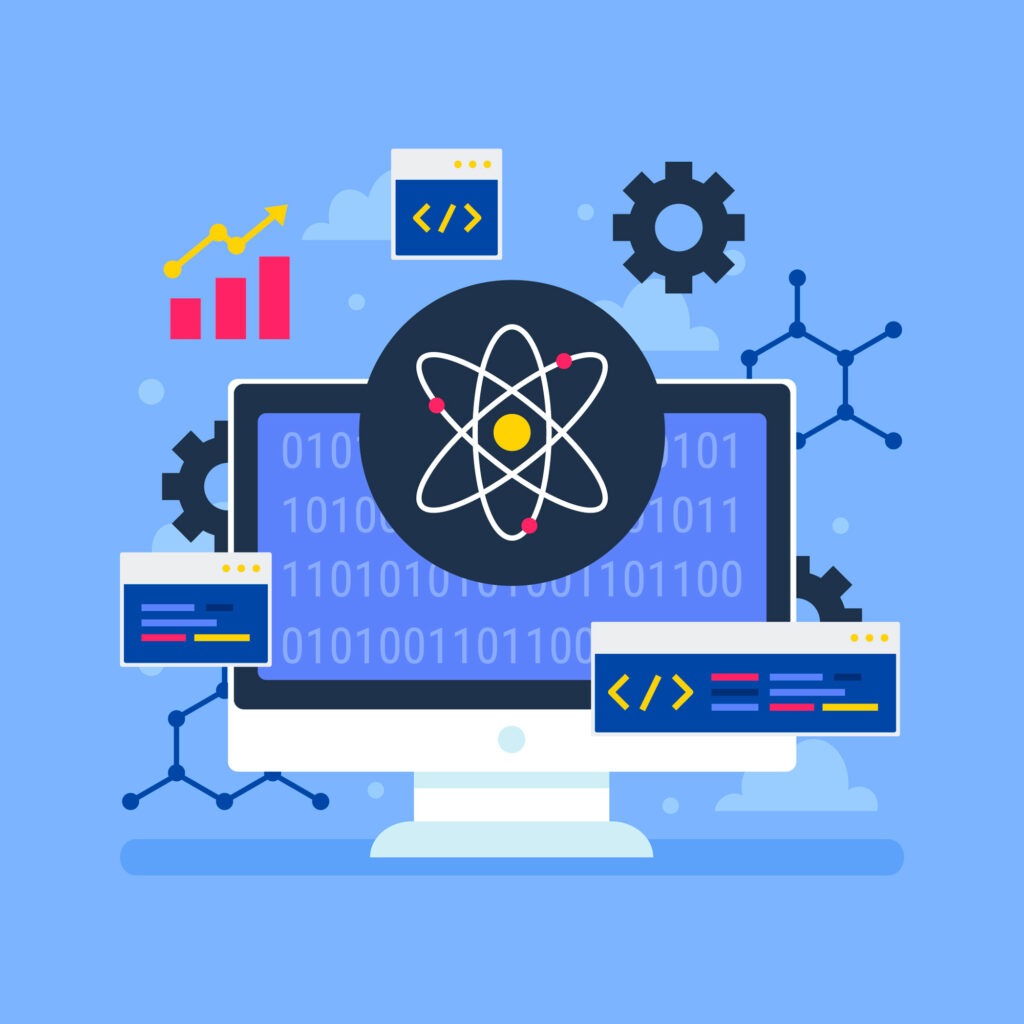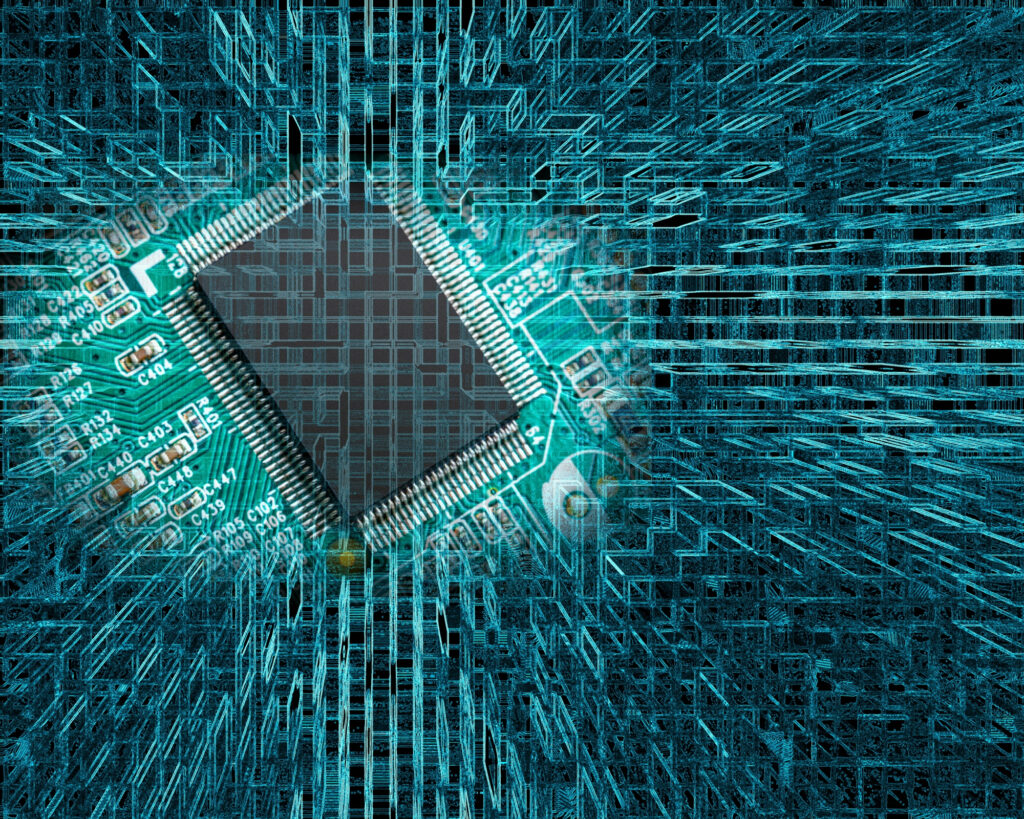Introduction
Hey there, you must have been fascinated by Quantum computers and the mind-blowing performance of quantum computers and we are sure you must have many many questions in your mind related to quantum computers so to help you out we are covering some of the most asked questions about quantum computers.

what is a use case of factorization in quantum computing?
Factorization in quantum computing can be use to breakdown the complex numbers into their prime factors very quickly. It is considered as crucial tool in modern technology for encrypting, decrypting and securing data.
Alright, quantum computing can be considered as computer’s wild cousin that loves to play with prime numbers. Factorization, a favorite game of quantum computers that is all about taking big prime numbers and breaking them down into it’s prime parts.
Imagine your favorite recipe, but instead of preparing it in steps you throw all ingredients in a blender, press the blend button, and Boom, it’s magically converted into its original ingredients !!! Quantum computers follow something similar during Factorization but with Numbers.
Why is it crucial? It’s a well-kept hidden weapon in the security armory of the online world. You see, encryption depends on difficult-to-factor integers, just like a coded love note to your crush. Being the geeky geniuses they are, quantum computers can factorize these numbers very quickly, which allows them to decipher codes. On the other hand, they can assist us in creating uncrackable codes for secure communication and data security.
In summary, quantum computing’s factorization is like the mathematical equivalent of Sherlock Holmes, solving puzzles and protecting our digital world from prying eyes.
What is an example of a use case in quantum computing?
In quantum computing, a qubit may be both 0 and 1 at the same time not like classical bits .Now, difficult problems may be readily solved more rapidly by quantum computers, such as streamlining supply networks or modelling molecules for medication development.

Quantum computing is the ability to simultaneously have both heads and tails on a coin. Quantum bits, or qubits, may exist in several states at once in this wacky world because of a characteristic called superposition. This makes it possible for quantum computers to solve issues that would stump traditional computers.
The process of modeling molecules to find new drugs is a fascinating application. Drug research will be speedier and more effective because of quantum computers’ amazing precision in simulating atom and molecular behavior. It’s like we have an enchanted microscope that can display the tiniest molecule dance party!
Quantum computing is like a superpower for supply chain optimization. It can process enormous amounts of data simultaneously taking into account many different factors, and find the optimum path for delivering your favorite pizza. Yes, quantum computers may just guarantee that you receive your pizza hot and on time. Quantum computing has a wide range of applications, from molecular magic to pizza accuracy.
what is the use of maths in quantum computing?
You can think of quantum computing like a laptop that has been upgraded. It uses the unexpected and facinating princples of physics to process the data in a way that would make a classical computer give up. So what is the use of math here? It’s sort like the foundation, DNA, and and secret key.

In quantum computer qubits, the quantum analouge of classical bits are the building blocks. In contrast to classical bits, which can only be either 0 or 1, quantum bits can exist in a superposition of states and these states and their evolution are described using linear algebra and complex numbers. Like logic gates in traditional computers, quantum gates are represented mathematically, and the design of quantum algorithms strongly depends on linear algebra.
But what effect does it have in practice? Quantum computers can solve issues that would take traditional computers eons to solve thanks to maths. For instance, Shor’s technique utilizes mathematics to factor huge numbers quickly enough to bypass the security of the encryption used today. Grover’s technique is another option for quicker database searching. Not to mention quantum simulations, which may simulate the behavior of molecules and lead to the development of new drugs and advances in material science.
To put it simply, mathematics in quantum computing is like the secret ingredient in a burger. It is the dialect that quantum computers use to carry out mind-boggling computations, resolve intricate issues, and perhaps even revolutionize cryptography and optimization. So, the next time you consider the possibilities of quantum computing, keep in mind that it all comes down to math with a dash of quantum strangeness.
which algorithm is used in quantum computing?
In Quantum Computing, the main algorithm is Shor’s Algorithm. It’s like a quantum superhero for breaking codes and solving complex math problems, using the superpowers of qubits. Think of it as the quantum Batman of algorithms, but instead of a utility belt, it uses entanglement and superposition to save the day. Now, let’s dive deeper into this quantum adventure!

Quantum computing is like the Willy Wonka’s Chocolate Factory of the tech world – it’s mysterious, mind-boggling, and can do things that seem straight out of science fiction. When it comes to the algorithms used in this quantum wonderland, Shor’s Algorithm stands tall, wearing a quantum cape.
Shor’s Algorithm: Breaking the Unbreakable
Imagine Shor’s Algorithm as the quantum version of a locksmith with supernatural skills. It’s exceptionally good at breaking codes, especially those that rely on the difficulty of factoring large numbers into their prime components, like your bank’s encryption. Regular computers might take eons to crack these codes, but Shor’s Algorithm puts on its quantum cape and says, “I’ve got this!”
The Quantum Superpowers: Qubits
To understand Shor’s Algorithm, you need to befriend its sidekicks – qubits. Unlike regular bits (the 0s and 1s of classical computing), qubits can exist in multiple states simultaneously thanks to a concept called superposition. It’s like having a cat that can be both alive and dead at the same time, except without the existential crisis.
The Entanglement Tango
Another quantum trick up Shor’s Algorithm’s sleeve is entanglement. It’s a kind of spooky connection between qubits where changing one instantaneously affects the other, no matter how far apart they are. It’s like having a psychic connection with your friend; you both know when the other one is thinking about pizza.
Factoring with Finesse
Now, here’s where Shor’s Algorithm struts its stuff. It can factor large numbers exponentially faster than classical computers. This is a big deal because many encryption methods rely on the idea that factoring large numbers is a time-consuming task. With Shor’s Algorithm, it’s like cutting through steel with a hot knife – quick and efficient.
The Catch
Of course, there’s a catch – Shor’s Algorithm isn’t always faster. It’s like using a Formula 1 car for your daily commute; it’s overkill. For some tasks, classical computers are still more practical. But for those super-secret codes that need cracking, Shor’s Algorithm is the quantum ace up the sleeve.
So, there you have it, our quantum Batman, Shor’s Algorithm, battling the forces of encryption and making the impossible look easy. Quantum computing is still in its early stages, but Shor’s Algorithm is the shining star, showing us the incredible potential of this mind-bending technology. And who knows, maybe one day, quantum computers will be as common as candy bars in Willy Wonka’s Factory!
why is quantum computing used for optimization problems ?
Quantum computing is used for optimisation problems because quantum bits, or qubits, can simultaneously represent several possibilities at once, Because of parallel processing the complex problems can be solved more quickly and effectively.

Quantum computing, believe it or not, is not just a funky sci-fi concept. It’s like the superhero of problem-solving, especially when it comes to optimization problems. So, why do we use quantum computing for these conundrums?
First things first, quantum computing is all about those little wonders called qubits. These qubits are like the cool kids of the computing world because they can exist in multiple states at the same time. Imagine you’re trying to choose between pizza and tacos, but in a quantum world, you could have a bite of both at once! Okay, not literally, but you get the idea. This ability to handle numerous possibilities simultaneously is what sets quantum computing apart.
When you’re dealing with optimization problems, which are all about finding the best solution among a gazillion possibilities, this quantum parallelism is like having a hundred brains working together. Regular computers, bless their silicon hearts, go step by step, exploring one possibility after another, like a sloth looking for its next leafy snack. Quantum computers, on the other hand, are more like a squirrel on caffeine – they hop around quickly, exploring multiple options in a fraction of the time.
Now, why is this parallel processing a game-changer? Well, optimization problems are everywhere, from scheduling airline flights to optimizing your Netflix recommendations (they’ve got to figure out the perfect show to binge-watch, right?). These problems involve searching through a gigantic haystack to find the tiniest needle. The faster you can do that, the better.
One classic example of optimization problems is the traveling salesman problem. Imagine a salesman who needs to visit multiple cities, and he wants to find the shortest route to cover all of them and return home. It’s like trying to plan a road trip, but with a gazillion pitstops. A regular computer would chug along, trying out different routes one by one, but a quantum computer could explore all those routes at once.
Now, don’t get too excited; quantum computing isn’t all rainbows and unicorns. There’s a catch. The technology is still in its infancy, like a baby taking its first steps, but quantum baby steps are way more complicated. Building and maintaining a quantum computer is like trying to juggle chainsaws while riding a unicycle – it’s tough!
The qubits in quantum computers are incredibly delicate, like fine china in a bull’s china shop. They need ultra-cold temperatures to operate, making Elsa’s Ice Palace look like a summer resort. But hey, scientists are working on it, and with time, quantum computers will become more practical and accessible.
So, in a nutshell, quantum computing is used for optimization problems because it’s like having a super-speedy, multi-tasking wizard at your service. It can explore countless possibilities at once, making it a dream come true for tasks like finding the shortest path, optimizing schedules, and even figuring out which movie you should watch next. Just keep in mind, quantum computers are still growing up, but they’re the future of problem-solving – and they’ll get there faster than a squirrel chasing an acorn on espresso.
which quantum algorithm is used to quickly factorize large numbers?
The quantum algorithm used for quickly factorizing large numbers is Shor’s algorithm, discovered by Peter Shor in 1994. It exploits quantum parallelism to factor large numbers efficiently, a task that would take classical computers an impractical amount of time.

Shor’s Algorithm: The Quantum Magician
Let’s dive into Shor’s algorithm, discovered by the quantum wizard Peter Shor in 1994. This algorithm is like a quantum magician pulling a rabbit out of a hat – except the rabbit is the prime factors of large numbers, and the hat is a quantum computer.
You see, factoring large numbers into their prime components is no easy task for classical computers. It’s like trying to solve a giant jigsaw puzzle with a million pieces. The bigger the number, the harder the puzzle. But Shor’s quantum algorithm is here to the rescue, armed with a quantum computer and a pinch of quantum weirdness.
Quantum Weirdness: Entanglement and Superposition
First, it taps into two of the quirkiest quantum phenomena: entanglement and superposition. Entanglement is like having a secret connection between particles, so what happens to one directly affects the other, no matter how far apart they are. Superposition allows quantum bits (qubits) to exist in multiple states simultaneously, like Schrödinger’s cat being both alive and dead at the same time.
The Quantum Parallelism Trick
Now, Shor’s algorithm plays the quantum parallelism card. While your classical computer would plod through the puzzle one piece at a time, a quantum computer with Shor’s algorithm can explore many puzzle pieces simultaneously. It’s like having a million hands and eyes working on different parts of the puzzle all at once.
The Funny Side of Quantum Computing
But, of course, quantum computing isn’t all serious business. It’s like a comical fusion of your wildest sci-fi dreams and a slapstick comedy show. One minute, particles are teleporting across the universe (thanks, quantum teleportation), and the next, they’re spinning like frenzied disco dancers (quantum superposition).
The Magic Trick Revealed
Here’s how Shor’s magic trick works: It takes your huge number, turns it into a quantum state, and then uses entanglement and superposition to do a wild dance. In the end, it pulls out the prime factors, which are the building blocks of the number. This is crucial because breaking down a number into prime factors is the key to decrypting many secure codes.
The Quantum Speedster
The beauty of Shor’s algorithm is that it can factor large numbers exponentially faster than classical computers. It’s like your grandma knitting a scarf while your quantum computer is making a hundred scarves at once. This speed has far-reaching implications, especially for encryption.
In a nutshell, Shor’s quantum algorithm is the ultimate weapon in the world of number factorization. It’s like having a superhero at your disposal when you’re faced with the seemingly insurmountable task of cracking those enormous numbers. So, if you’re ever in a bind trying to break secret codes or unravel mathematical mysteries, call upon Shor’s algorithm – the quantum magician that’s a cut above the rest.
can a quantum computer be modeled on a standard computer ?
A quantum computer can’t be fully modeled on a standard computer. Quantum computers use unique properties of quantum bits (qubits) that classical computers can’t mimic. It’s like asking a bicycle to imitate a jet plane – they’re different beasts!

Imagine you’re trying to teach your pet goldfish to write Shakespearean sonnets. No matter how hard you try, that’s not happening. The same principle applies when trying to model a quantum computer on a standard computer. Let’s dive into this aquatic adventure and explore why.
The Quantum World vs. the Classic World: A Mismatch Made in Quantum Heaven
In the digital realm, your standard computer operates with bits, which can be either 0 or 1. These bits are the building blocks of classical computing, like the bricks in a Lego castle. Quantum computers, on the other hand, use qubits, which can be in a state that is 0, 1, or both at the same time. It’s like your pet goldfish having an identity crisis, thinking it’s both Nemo and Dory simultaneously.
Entanglement and Superposition – The Quantum Circus Acts
Two key quantum tricks are entanglement and superposition. Entanglement allows qubits to be connected in such a way that changing one instantly affects the other, no matter how far apart they are. Superposition lets qubits exist in multiple states at once. It’s like a magician pulling endless rabbits out of the same hat, but way cooler.
No Magic Code for Quantum Conversion
You might be tempted to think, “Hey, I’ll just write some code that mimics these quantum quirks on my laptop!” Sadly, it’s not that simple. While you can simulate small-scale quantum systems on a classical computer, emulating large, powerful quantum computers is like trying to fit an elephant into a Mini Cooper – it won’t work.
Quantum Computers Aren’t Just Faster, They’re Different
Standard computers are great at what they do, but quantum computers have a different skill set. They’re not just faster calculators; they’re better suited for specific tasks like simulating quantum systems, optimizing complex problems, and cracking encryption. Trying to model a quantum computer on a classical one for these tasks is like trying to turn a toaster into a gourmet chef – it’s not their forte.
Quantum Error-Correcting Codes: Quantum Computers’ Cheat Sheets
Even if you could model a quantum computer, you’d need quantum error-correcting codes to make it work. These are like cheat sheets for quantum computers, helping them handle errors that arise due to the quirky nature of quantum mechanics. It’s like giving your pet goldfish some underwater goggles to write those sonnets – a bit too far-fetched.
In Conclusion – It’s Quantumly Complicated
In a nutshell, modeling a quantum computer on a standard computer is about as realistic as teaching your goldfish to play piano concertos. The quantum world has its own rules and superpowers, which can’t be perfectly mimicked by classical computing. But hey, who knows what the future holds? Quantum computing is an exciting frontier, and maybe someday, we’ll find a way to make these two worlds dance together. Until then, let’s appreciate their uniqueness and keep our fish on their own sides of the bowl!
You can Also check: Should i clear tpm when resetting laptop (2023), Bias convolutional neural network 2023,
